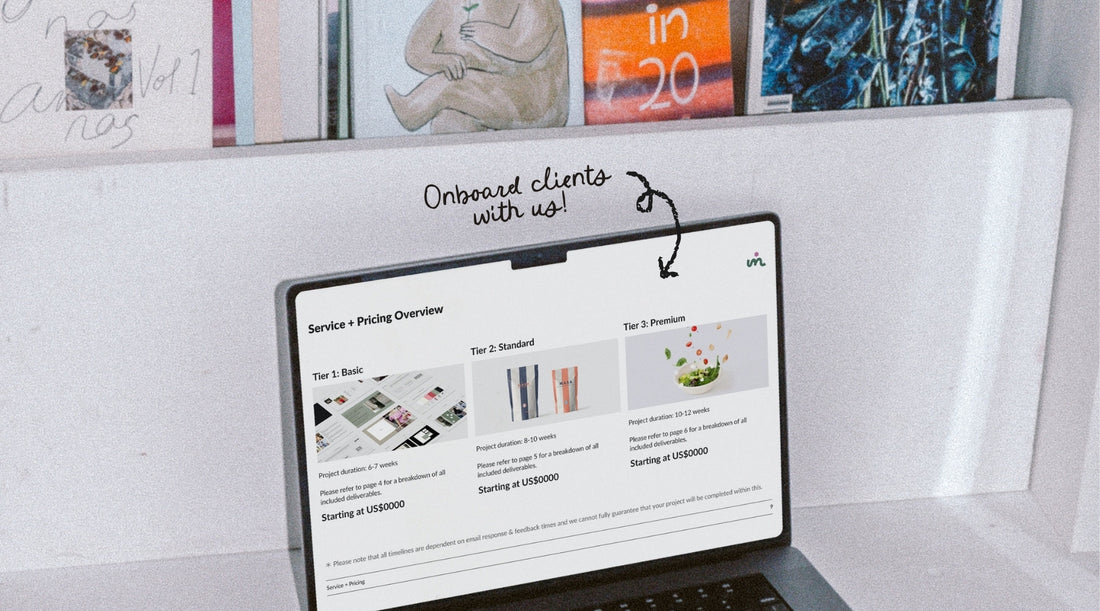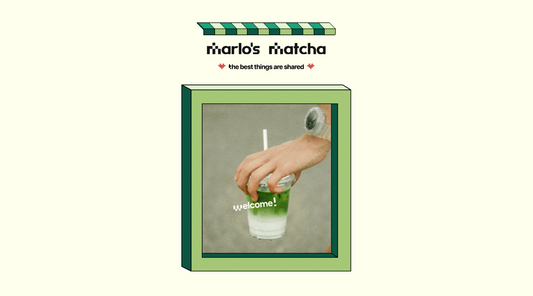
4-Step Guide To Onboard Design Clients
When you first start working with new clients, the onboarding process can make or break your entire project.
Too many designers jump straight into the creative work without laying the proper groundwork.
When we first started Marlo Studios, we used to struggle with this process.
We’d end up with confused clients, endless revisions, and projects that dragged on for months.
Then we met Alex, who had worked with major clients like Mastercard and Uber. His approach to client onboarding completely transformed how we work.
We’ve now worked with 100+ brands using a process we developed using his principles.
I’ll explain the process in 4 easy steps and why it’s become the foundation of our work at Marlo Studios.
Step 1—Send the Brand Questionnaire
Before Alex's advice, we'd start projects with a quick phone call and maybe a few emails.
Now we begin every project with a detailed brand questionnaire. This isn't busy work.
The questionnaire captures your client's brand goals, specific requirements, and vision for their identity.
You want to understand their purpose, preferences, and what they're trying to communicate to their audience.
This single step eliminated 90% of the confusion we used to experience.
When you have comprehensive information before you start designing, you avoid the back-and-forth that kills project momentum.
Step 2—Hold the Initial Meeting
Once you have the questionnaire responses, consolidate all that information into a clear format.
This becomes the foundation for your initial client meeting.
During this meeting, pitch your initial design directions based on everything they've shared.
Set clear expectations for the project timeline, deliverables, and how you'll work together.
This meeting isn't just about presenting ideas. It's about making sure you're both aligned on goals and approach before moving forward.
The difference this makes is immediate. Clients feel heard and understood from day one.
Step 3—Develop and Refine Concepts
Present two initial design concepts based on your client's input. These should reflect different approaches to solving their brand challenges.
Gather feedback during the presentation and schedule follow-up meetings for refinements. We typically plan for two additional rounds of design iterations and feedback sessions.
This structured approach prevents endless revision cycles and keeps the project moving toward completion.
No more "can you try just one more thing" requests that derail timelines.
Step 4—Deliver the Brand Identity Kit
Once your client approves the final designs, compile all assets into a comprehensive brand identity kit.
This includes all necessary files, guidelines, and instructions for implementation.
Your deliverables should be organized, clearly labeled, and ready for your client to use immediately.
This professional handover reinforces the value of your work and sets them up for success.
Clients consistently tell us this final step makes them feel confident about implementing their new brand identity.
The Tools That Make It All Possible
We created our Brand Designer Project Launch Kit to streamline this entire process.
The kit includes three templates that map directly to our onboarding process.
Project Proposal Deck helps you present your services professionally after initial consultations. It includes your introduction, case studies, three package options, timeline, and deliverables.
Brand Questionnaire Document prompts your clients to think deeply about their brand values and goals. This gives you the insights needed to create compelling brand identities.
Project Kick-Off Deck walks clients through key principles, timeline, and two distinctive brand concept routes with mood boards and color associations.
These templates are designed for use with Canva, making them easily editable and shareable.
They help you manage the entire process from initial proposal to project kickoff professionally.
Why Follow This Process
Clear and professional onboarding builds trust with clients from day one. When clients know what to expect and when to expect it, they're more confident in your abilities.
The structured approach ensures smooth communication throughout the project. You spend less time managing confusion and more time creating great design work.
Most importantly, this process gives you a repeatable framework to follow. That reduces your stress and improves client satisfaction consistently.
We've used this process with clients ranging from small businesses to large companies, and it works every time.
Conclusion
Client onboarding isn't just administrative work. It's the foundation that determines whether your project succeeds or struggles.
When you invest time in proper onboarding, you create better outcomes for both yourself and your clients.
The process becomes smoother, the communication clearer, and the final results stronger.
What started as a solution to our own project management problems became the system that transformed our entire business.
If you're ready to streamline your client onboarding process, our Brand Designer Project Launch Kit includes everything you need to get started.



